Fruit Fly Brain Observatory
The Fruit Fly Brain Observatory Open Collaborative Ecosystem
The Fruit Fly Brain Observatory is an open collaborative ecosystem that provides
- a hub for storing and integrating fruit fly brain research data from multiple data sources worldwide,
- a unified repository of tools and methods to build, emulate and compare fruit fly brain models in health and disease, and
- an open framework for fruit fly brain data processing and model execution.
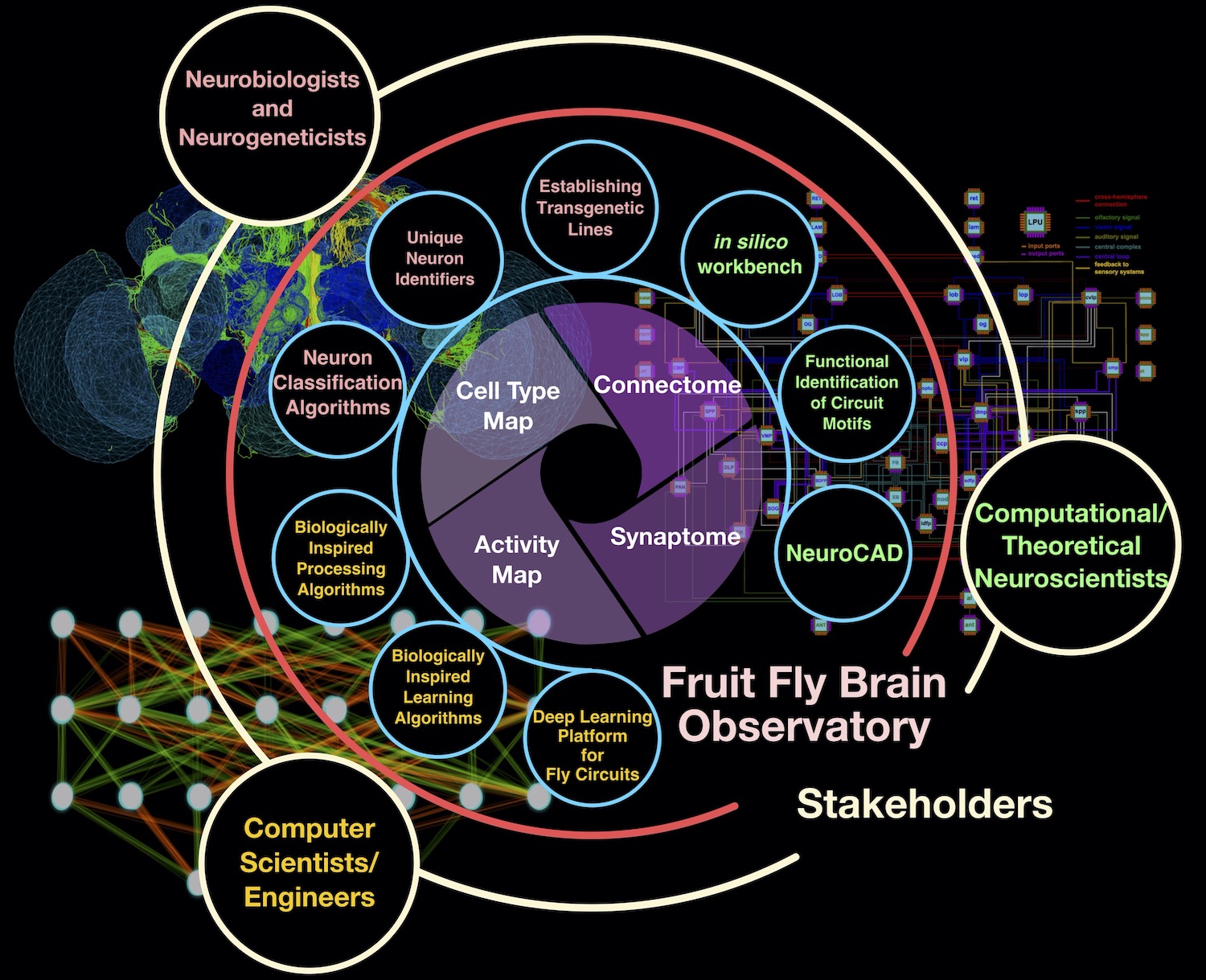
The FFBO assembles cell type, connectome, synaptome and activity maps within a single ecosystem that benefits three groups of stakeholders:
- neurobiologists and neurogenetists,
- computational and theoretical neuroscientists, and
- computer scientists/engineers.
The FFBO dramatically increases the pace of discovery by enabling neurobiologists and computational neuroscientists alike to generate and test new hypotheses, by interrogating, visualizing and simulating the fruit fly brain at different scales, from neural circuits to neuropils and ultimately the entire brain. Learn more.
FFBO Applications
Currently, FFBO includes two sets of applications:
- BrainMapsViz: A suite of state-of-the-art web applications supporting the exploration of fruit fly brain datasets.
- FlyBrainLab: An interactive computing platform for studying the function of executable circuits constructed from fruit fly brain datasets.
Both sets of applications share a set of common server-side components that consist of the FFBO Processor, the NeuroArch Server, the NeuroNLP Server and the Neurokernel Server. Each application provides its own user-side components. The figure below provides a schematic of the interconnects of the key components.
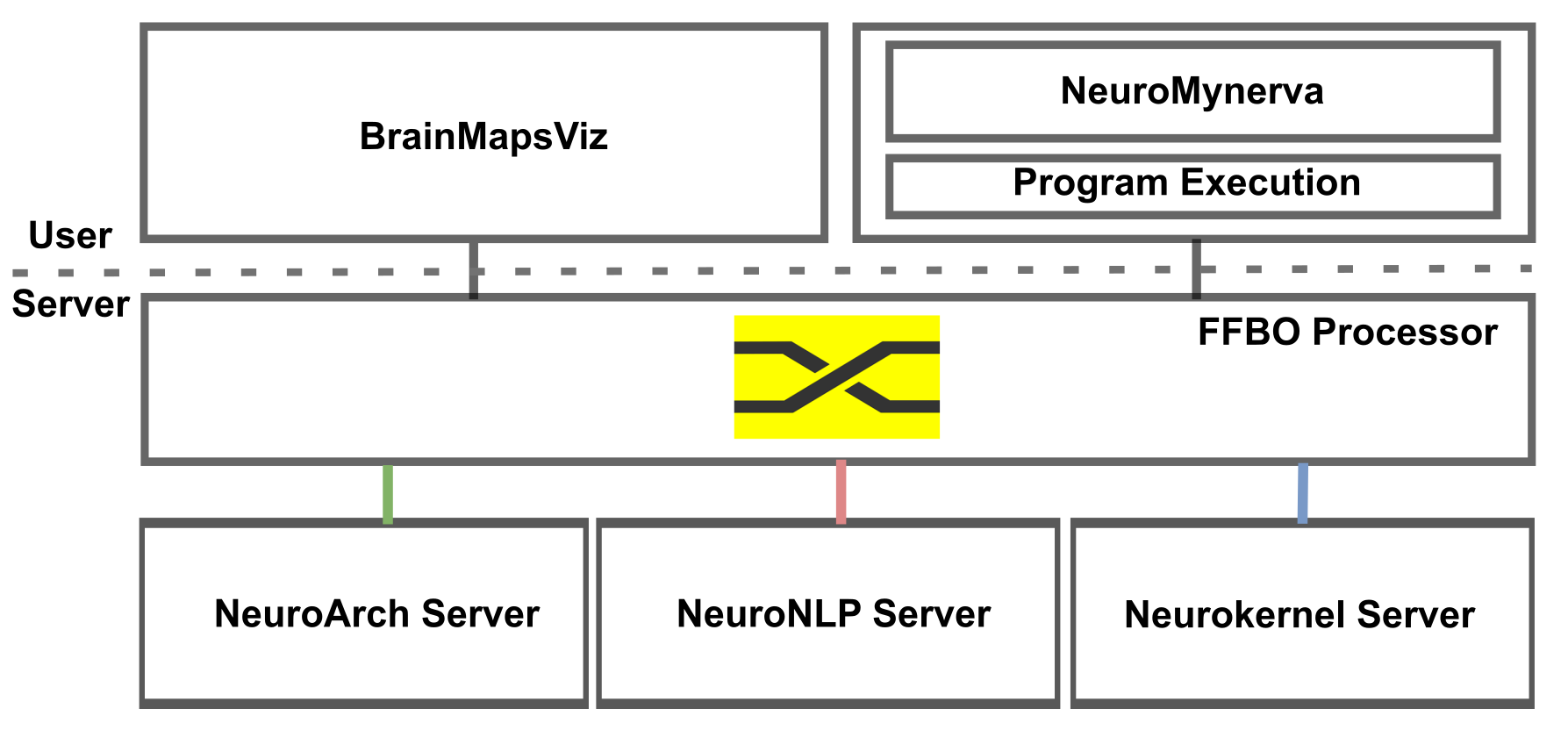
Resources for the common server-side components, BrainMapsViz and FlyBrainLab are, respectively, listed in the following sections.
FFBO Server-Side Components
The following figure depicts the server-side components, including the FFBO Processor, the NeuroArch Server, the NeuroNLP Server and the Neurokernel Server.
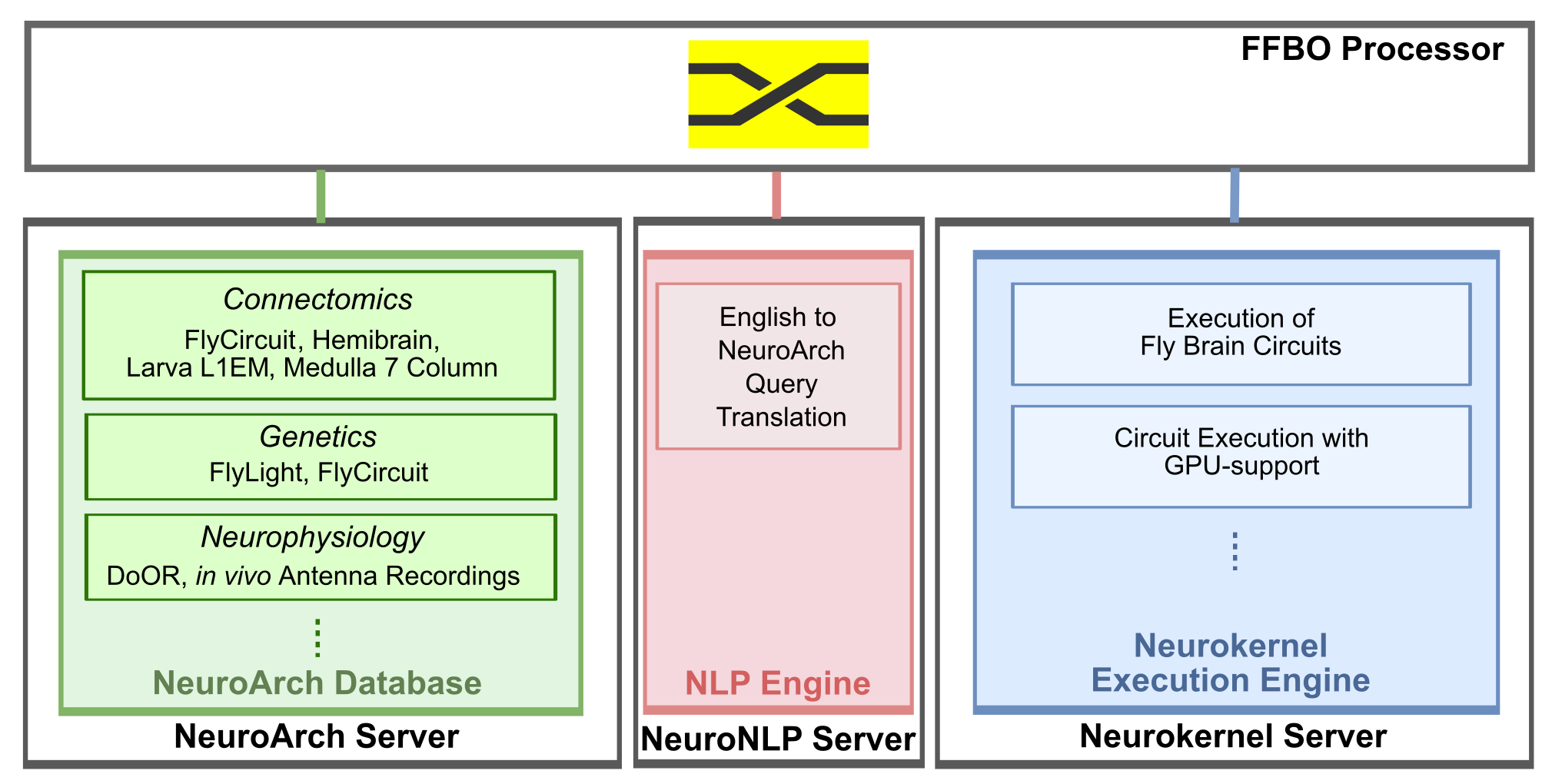
FFBO Processor implements a Crossbar.io router that establishes the communication path among connected components and clients. Components communicate using routed Remote Procedure Calls (RPCs) and a publish/subscribe mechanism. The FFBO processor can be hosted locally or in the cloud.
NeuroArch Server hosts the NeuroArch Database implemented with the OrientDB graph database. The NeuroArch Database provides a novel data model for representation and storage of connectomic, synaptomic, genetic and neurophysiology data of the fruit fly brain with cross-referenced executable circuits. The Queries of the NeuroArch Database are supported by the NeuroArch Python API. The NeuroArch Server provides high level RPC APIs for remote access of the NeuroArch Database.
Neurokernel Server provides RPC APIs for code execution of model circuits by the Neurokernel Execution Engine. Neurokernel supports the easy combination of independently developed executable circuits towards the realization of a complete whole brain emulation. The Neurokernel Execution Engine features:
- the core Neurokernel services providing management capabilities for code execution, and communication between interconnected circuits,
- the Neurodriver services providing low level APIs for code execution on GPUs according to user-specified circuit connectivity, biological spike generators and synapses, and input stimuli.
The Neurokernel Server directly fetches the specification of executable circuits from the NeuroArch Server, instantiates these circuits and transfers them for execution to the Neurokernel Execution Engine.
NeuroNLP Server provides an RPC API for translating queries written as English sentences, such as "add dopaminergic neurons innervating the mushroom body", into database queries that can be interpreted by the NeuroArch Server API, using the NLP Engine. This capability increases the accessibility of the NeuroArch Database to users without prior exposure to database programming, and greatly simplifies the often-demanding task of writing database queries.
1. N. H. Ukani, C.-H. Yeh, A. Tomkins, Y. Zhou, D. Florescu, C. L. Ortiz, Y.-C. Huang, C.-T. Wang, P. Richmond, C.-C. Lo, D. Coca, A.-S. Chiang, and A. A. Lazar, Fruit Fly Brain Observatory: from Structure to Function, Neurokernel Request for Comments, Neurokernel RFC #7, December 2016.
2. N. H. Ukani, C.-H. Yeh, A. Tomkins, Y. Zhou, D. Florescu, C. L. Ortiz, Y.-C. Huang, C.-T. Wang, M. K. Turkcan, T. Liu, P. Richmond, C.-C. Lo, D. Coca, A.-S. Chiang, and A. A. Lazar, The Fruit Fly Brain Observatory: From Structure to Function, bioRxiv, Volume 580290, March 2019.
3. Aurel A. Lazar, Tingkai Liu, Mehmet K. Turkcan, and Yiyin Zhou, Accelerating with FlyBrainLab the Discovery of the Functional Logic of the Drosophila Brain in the Connectomic and Synaptomic Era, eLife, February 2021.
4. Aurel A. Lazar, Mehmet Kerem Turkcan, and Yiyin Zhou, A Programmable Ontology Encompassing the Functional Logic of the Drosophila Brain, Frontiers in Neuroinformatics, April 2022.
The Bionet Group is supported by grants from
 |
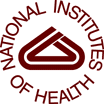 |
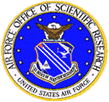 |
 |